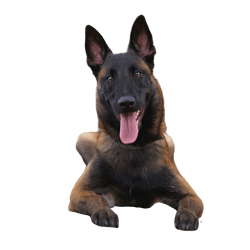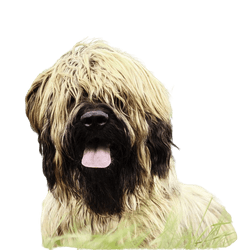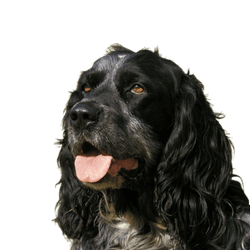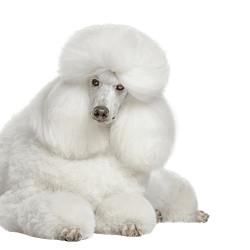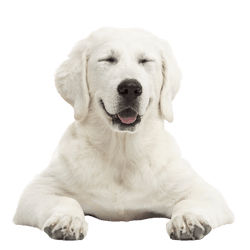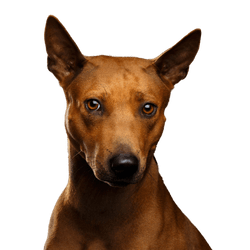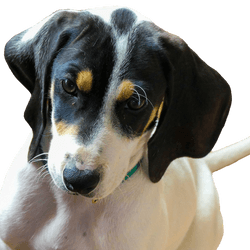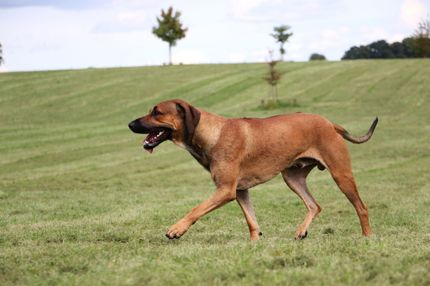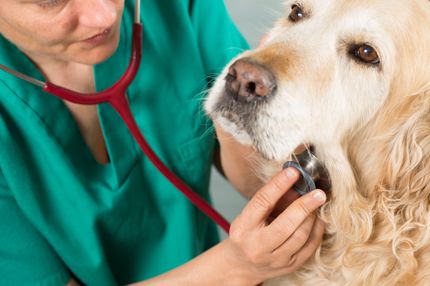Facts & Origin
Origin and history of the Weimaraner
The history of the Weimaraner is not completely known, but there are some theories. What is proven, however, is the following: This breed, at that time with a lot of lead dog blood, found its origin at the beginning of the 19th century by Grand Duke Karl August at the court of Weimar and was first used for big game hunting, later for pointing and retrieving game birds. At that time, his appearance was secondary, rather, only the performance was considered. After his task as a leader dog became less relevant, there were also crosses with the chicken dog.
It was not until 1897 that planned breeding with a uniform standard took place. Since then, this breed has been recorded in studbooks and bred pure, which unfortunately can lead to inbreeding problems. At the same time, it can be said that the Weimaraner is recognized as the oldest German pointing dog breed, which has been purebred since 1900.
At the end of the 19th century, individual long-haired animals appeared: Initially they were undesirable, today both coat forms are allowed.
Worldwide fame outside Germany
A few years after the Weimaraner was first imported to America, in the 1950s, the breed became popular in the United States, as its owners included President Eisenhower and movie star Grace Kelly. Since they were kept more as family dogs in these areas, there are differences in the American version compared to the breed standard of the FCI.
The breed also gained notoriety through the work of photographer and artist William Wegman, who became famous for his Weimaraner portraits.
The Weimaraner as a hunting dog
The Weimaraner is a versatile hunting dog and is also known as the "German pointing dog". His duties as a hunting companion include:
- to indicate the game
- retrieving shot game (also from the water)
- welding work
During the search he is persevering and knows how to use his extremely fine nose. His game and predator sharpness is appreciated by hunters.
Suitability and keeping
The Weimaraner is bred for hunting and with his good nose he is therefore very suitable for mantrailing and as a rescue dog. To a certain extent, it can also be used as a guard or watch dog. Owners of this dog breed should also be very sporty and be able to offer him enough exercise as well as a good education, but this breed is still not a beginner dog.

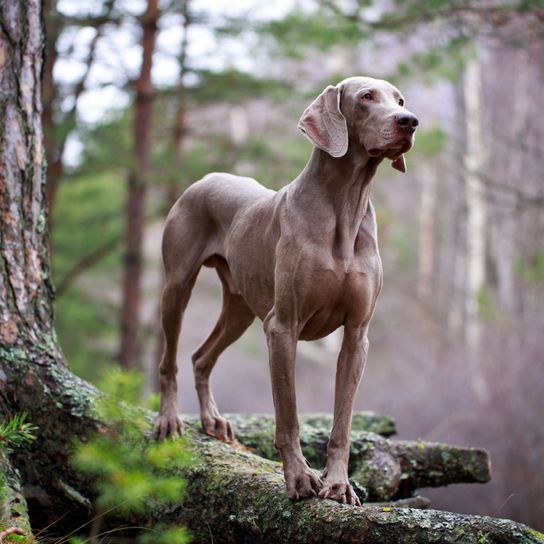
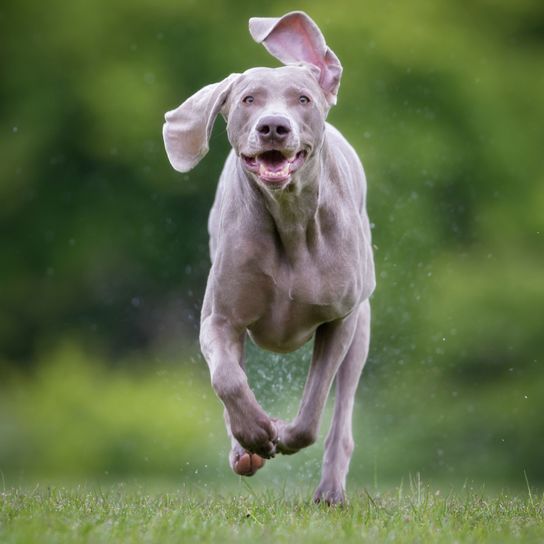
| Alternate Name | - |
| Origin | Germany |
| Life expectancy | 12 - 14 years |
| Care requirements | low-maintenance |
| Activity level | high |
| FCI group | Continental Pointing Dogs |
| AKC group | Sporting Group |
| KC group | Gundog Group |
Weimaraner mixes
Attitude, character and temperament of the breed
Typical character traits of the Weimaraner
The Weimaraner is a highly prized breed known for its slender body and keen sense of smell. Despite their good looks, this breed is not the easiest to take care of. They are energetic and sometimes stubborn, so it is important that their owners give them consistent attention and training to get the most out of their breed. Without proper training, a Weimaraner can become headstrong and try to run the household. Owners describe them as obedient and friendly, but sometimes strong-willed and assertive.
Your Weimaraner needs loving, sensitive and consistent training. If you train your Weimaraner puppy well, you will get a reliable partner who will build a very strong relationship with you.
Employment possibilities of a Weimaraner
The passion of a Weimaraner is hunting. If you do not want to use your four-legged friend for this, you will have to find another way of occupation for this dog that loves to move. A long daily walk is a basic requirement. In addition to physical exercise, your dog also wants to be mentally occupied. This is where search games and dummy work come in handy. During your daily rounds in the area you should always remember that you have a hunting dog with you, whose drive can be difficult to stop.
Character
Usage
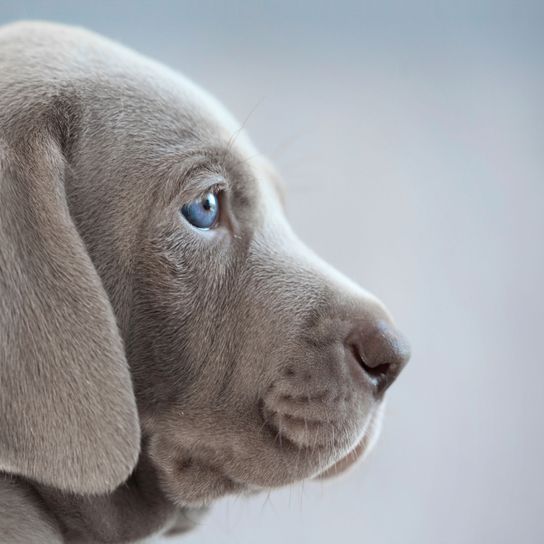

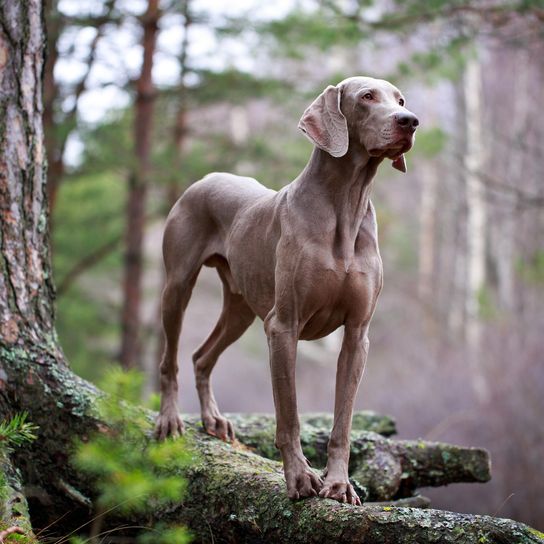
Diseases typical for the Weimaraner breed
Weimaraners are considered to be a healthy breed. However, due to their size, the following problems may be more common:
- Hip dysplasia (HD)
- Gastric torsion
- Epilepsy
Due to their droopy ears, regular check-ups are also necessary to prevent ear infections.
Care and life expectancy
Weimaraners usually live between 11 and 14 years. To prevent gastric distress, it is advisable to feed your Weimaraner smaller portions more often, and to take rest periods after meals.
Weimaraner breeding and purchase
This breed is bred in Germany basically for hunting. In Weimaraner breeding, the parents are selected not only for beauty, but also judged for performance, health and temperament. Therefore, before a Weimaraner is approved for breeding, it must provide proof of successfully completed hunting tests, pass a temperament test, and be examined for hip dysplasia.
Weaknesses of character, ectropion and entropion as well as other malformations lead to exclusion from breeding. Therefore, if you buy a puppy from a reputable breeder, your puppy will most likely be healthy as well.


Breed characteristics of the Weimaraner
The Weimaraner is classified by the FCI in Group 7(Pointing Dogs), Section 1.1 (Continental Pointing Dogs,"Braque" type). As a hunting dog, the breed standard requires a working test.
This breed conforms to an utilitarian working type, but shapely, sinewy, and with strong musculature. The maleor female type should be clearly pronounced. His movement is ground covering and flowing in all gaits. At the trot, the back remains straight and the canter should also be long and flat .
Size and weight
As a medium to large hunting dog, it has a height at the withers of about 59 to 70 cm in males and 57 to 65cm in females. While the former weigh about 30-40kg, bitches have a body weight of about 25-35kg.
The head
The skull is in harmony with the body height and the facial skull and iswiderinmalesthan infemales . The width of the top of the head isalso ingoodproportion to the overall length of the head. Thereis adepression in themiddle of the forehead, but the step of the forehead is extremely slight. The occiput is slightly to moderately prominent and also the zygomatic bone is behind the eyes well traceable. The muscular cheeks are clearly pronounced.
The muzzle
Typical of the Weimaraner is a large nasal sponge projecting over the lower jaw with a dark flesh color, gradually changing to gray toward the rear. The long muzzle itself, especially in males, is strong and almost angular in profile. The muzzleand fang area are approximately equal in strength. The bridge of the nose is described as "straight, often somewhat arched, never curving downward". The moderately sloping lips of the Weimaraner, which has a small oral fold , are flesh colored.
The so-called scissor bite is typical, with the incisors rubbing together.
The eyes & ears
The amber,round eyes, which are even sky-blue in puppy age, are perceived as very beautiful. They have an intelligent expression and are hardly slanted, with the eyelids lying well against them. The high set, folded ears of the Weimaraner are wide and quite long, so that they reach the corner of the mouth approximately, rounded to a point. At attention he turns them slightly forward.
The rump
The muculous, round neck is well carried by breed specimens and its upper profile line is curved upward. It is dry but not too short and strengthens towards the shoulders, but blends harmoniously with the topline and strong chest, which reaches almost to the elbow and has a pronounced forechest. The withers are well defined and lead into an often relatively long, muscular back that has no slump. The broad loins are equally muscular, but may be straight or slightly arched. The pelvis is also long.
The lower profile line should be slightly rising without the belly being tucked up.
The tail
Unlike comparable breeds, the Weimaraner has a slightly deeper tail setbelowthetopline. The tail itself is strong and well furnished with hair and is carried hanging when at rest, horizontally or even higher when alert and at work. In countries where legislation permits this, the tail oftheshorthairedWeimaraner will be shortened appropriatelyforhunting use.
The limbs
Generally speaking, this breed of dog has high, sinewy legs, which should bestraight and parallel, but not broad. Also characteristic is a long and sloping shoulder, well laid back and strongly muscled. The strong upper arm as well as the forearm are also described as (sufficiently) long and between them lies a free and straight elbow. The front tarsal joint is strong as well as tight, the front metatarsus is sinewy and slightly sloping.In the hindquarters, the upper thigh is strong and well muscled, the stifle and hock joints have the same characteristics as the front tarsus joint. The tendons of the long lower leg are clearly prominent. The hind metatarsus is sinewy and almost vertical.
The strong, arched front feet are straight to the middle of the body and have closely knit toes with light to dark gray claws. The pads of the Weimaraner are well pigmented and coarse. Often this breed haslongermiddle toes. The hind feet should be kräftig, compact and without wolf claw, but otherwise look likethe front feet.
The coat
The not too close fitting coat of the Weimaraner can wear either short hair or long hair.
In the former, he has short, but longer and denser than most comparabledog breeds,strong,verydense,smoothly lyingtop coat. As a rule, he has no or only little undercoat. The Longhaired Weimaraner, on the other hand, hassoft, long topcoat, which measures about 3-5cm on the sides ( usually a little longer on the underside of the neck, the forechest and the belly ) , - with or without undercoat. It issmooth or slightly wavy and the hair at the base of the appendage appears long overlapping. Velvety hair is permitted at the tips of the appendages.Good feathers and pants, which however become less long towards the bottom , as well as a tail with a good flag are typical . The inter-toe area is hairy, but the head coat should be less long.
Mixed breed dogs may have astocky coat with medium length, denseand well fitting top coat and dense undercoat. Moderate feathering and pants occasionally form with this.
The Weimaraner has a typical silver, fawnor mouse gray coloring or transitions between these shades. The head and the ears are usually a little lighter andwhite markings arepermitted onlyto a smallextent onthe chest and on the toes. In some cases there isamoreorlesswell defined dark eel line on the middle of the back.
| Fur length | short |
| Fur | - |
| Ear shape | Floppy Ear |
| Tail | lang |
| Anatomy | slim, sporty |
| Size ♀ | 62 - 67 cm |
| Weight ♀ | 20 - 23 kg |
| Size ♂ | 59 - 63 cm |
| Weight ♂ | 23 - 25 kg |
| Suitable For | - |
Colors



Known Diseases
Hip dysplasia (HD)
Hip dysplasia (HD) is a genetic condition in dogs where the hip joint is not shaped properly. This leads to pain, stiffness and restricted movement.
Epilepsy
Definition: Dog has epilepsy if, for example, at least two epileptic seizures occur more than 24 hours apart.
Gastric torsion
Gastric torsion is a disease in which the stomach rotates around its own longitudinal axis. The cause of the disease is not known.
FAQ
-
A Weimaraner from good breeding costs about 1500 Euro.
-
The Weimaraner is a hunting dog and therefore not primarily bred and suitable as a family dog. However, he can be integrated into a family as a member.
-
No, the Weimaraner is not considered dangerous and is not a listed dog in Germany, Austria or Switzerland.
-
In principle, everyone is allowed to keep a dog - even a Weimaraner. However, age restrictions or special templates for dog ownership are different in each country.
-
10 to 14 years.
-
President Eisenhower and movie star Grace Kelly both had a Weimaraner.
-
As a hunting dog breed, the Weimaraner is not necessarily suitable as a beginner dog.
-
The Weimaraner has been purebred since the creation of its studbook starting in 1897.
-
Weimaraners are hunting dogs with gray or silver coats.







